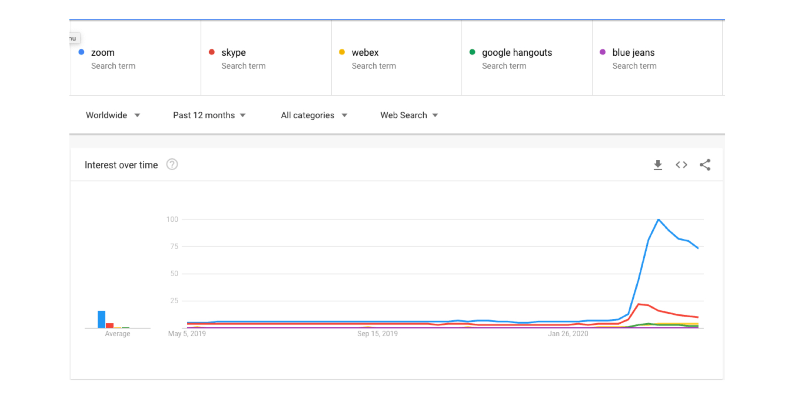As businesses had to revert to working from home, Zoom became a global phenomenon. Their growth in Q1 fiscal 2021 generated some notable profit results for the company. Their net income, an unadjusted profit metric, rose from $0.2 million in the year-ago quarter to $27.0 million in its most recent three months.
How do you grow a business like that? Read through this last episode of our series if you want to learn more about their economic model and how they make money.
#1 Strong freemium offering
Zoom is giving away an excellent product for free. People can set a free 40-minute conference call with up to 100 participants and enjoy the freedom to jump on video conference without having to download any application or software. It might not seem like a big deal, but it’s actually a driving force in Zoom’s adoption pace and virality.
The freemium model not only speeds up the rate at which Zoom’s conference URLs are shared from one-to-many users, it also allows potential customers to get to know their products, which increases awareness for Zoom through word-of-mouth.
This no-charge offer turns out to be the biggest money earner ever. Once people are happy with what they discover for free, they are more inclined to evangelize the product and buy the premium service. This goes for enterprises too. 55% of Zoom’s enterprise deals over 100,000 started with a single employee trialling a free version of the product.
The same bottoms-up approach from early adopters worked wonders for Facebook, Twitter, and Gmail.
#2 Their market is EVERYONE
In the first part of our series, we’ve highlighted what makes Zoom the go-to platform for video communications. We’ve also talked about how they succeeded in building a sensational brand. They’ve done things right even with their culture. All these areas – product, people, promotion – have set the ground for a market explosion. The work-from-home trend just pushed the pedal, landing Zoom on the biggest addressable markets ever. Because the reality is their market is no longer just teachers, students, trainers, and small businesses. Now, their market is everyone.

If you take a look at the Google Search results for video conferencing services in the last couple of months, it’s even easier to understand how the market exploded for Zoom. The nearest competitor to Zoom’s growth, in terms of search, is Skype with nearly 20%. But even way before the global lockdown, Zoom was already way ahead. The quarantine only fueled their growth.
#3 Hardware revenue, why not?
Hardware is not crucial to Zoom’s business, but it definitely brings in revenue and has great potential to become a more solid growth stream.
Zoom Rooms and Workspaces let businesses use computers, tablets, cameras, microphones, and more to hold virtual meetings. For larger-scale organizations, which need to hold meetings across different offices, Zoom comes in with the perfect setup because they also make integration with the hardware much easier.
They either offer their own set of hardware, which they co-created with other manufacturers, or they promote and recommend purchasing from Zoom-certified hardware providers. Such providers pay a percentage of every hardware sale to Zoom, which in return makes sure to promote their products to the company’s customers.
Zoom’s recent elevation of funding in a private company designing and developing video communication hardware shows that Zoom sees great potential in this new revenue stream. “In the third quarter of fiscal year 2020, we made a $3.0 million strategic investment in a private company in the business of designing and developing video communications hardware. In the first quarter of fiscal year 2021, we made an additional $8.0 million strategic investment in this company,” Zoom announced in early June. (Zoom’s fiscal 2020 ended Jan. 31, 2020).
To gain free access to the end-to-end case study on Zoom’s growth and success, you can sign up to BottomUp Skills.
About BottomUp Skills
BottomUp Skills is the e-learning platform created and supported by the QUALITANCE global thought-leadership team for innovators, makers, and creatives who want to sharpen their skills in innovation, design thinking, and technology. Usually, such courses are exclusive to our clients such as Ford Motor Company, News Corp Australia, Breville, and many others around the world. Now, we have opened the paid subscription courses and made them available to everyone for life.

![Zoom Success [Part 4] How Zoom’s clever business model delivers and captures value](https://qualitance.com/wp-content/uploads/2020/06/Zoom1-full.png)
![Zoom Success [Part 4] How Zoom’s clever business model delivers and captures value](https://qualitance.com/wp-content/uploads/2020/06/zoom1-thu.png)
No Comments